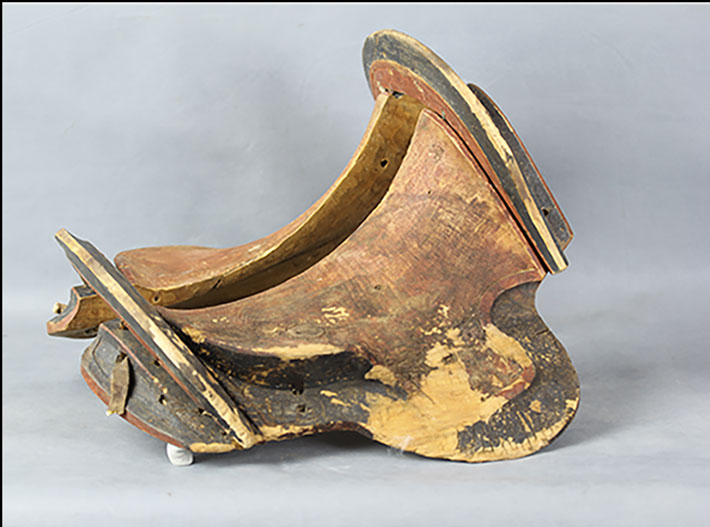 BOULDER, COLORADO—Live Science reports that a wooden-frame saddle that was looted from a cave burial in western Mongolia has been dated to A.D. 420 by an international team of researchers including William Taylor of the University of Colorado. The saddle’s wooden frame had been covered with horsehide and painted with black and red pigments. Straps on either side of the saddle suggest it had been equipped with iron stirrups. An iron bit, wooden archery equipment, mummified horse remains, and human bones were also recovered by police. The researchers explained that the early date for the saddle from Urd Ulaan Uneet suggests that horseback riders on the Eastern Steppe may have played a key role in the development of the rigid saddle and the use of stirrups. These innovations made a rider more stable, and allowed for more movement of the upper body, especially in mounted warfare, Taylor said. Read the original scholarly article about this research in Antiquity. To read about the world's oldest known saddle, go to "A More Comfortable Ride."
BOULDER, COLORADO—Live Science reports that a wooden-frame saddle that was looted from a cave burial in western Mongolia has been dated to A.D. 420 by an international team of researchers including William Taylor of the University of Colorado. The saddle’s wooden frame had been covered with horsehide and painted with black and red pigments. Straps on either side of the saddle suggest it had been equipped with iron stirrups. An iron bit, wooden archery equipment, mummified horse remains, and human bones were also recovered by police. The researchers explained that the early date for the saddle from Urd Ulaan Uneet suggests that horseback riders on the Eastern Steppe may have played a key role in the development of the rigid saddle and the use of stirrups. These innovations made a rider more stable, and allowed for more movement of the upper body, especially in mounted warfare, Taylor said. Read the original scholarly article about this research in Antiquity. To read about the world's oldest known saddle, go to "A More Comfortable Ride."
Saddle Discovered in Mongolia Dated to Early Fifth Century A.D.
